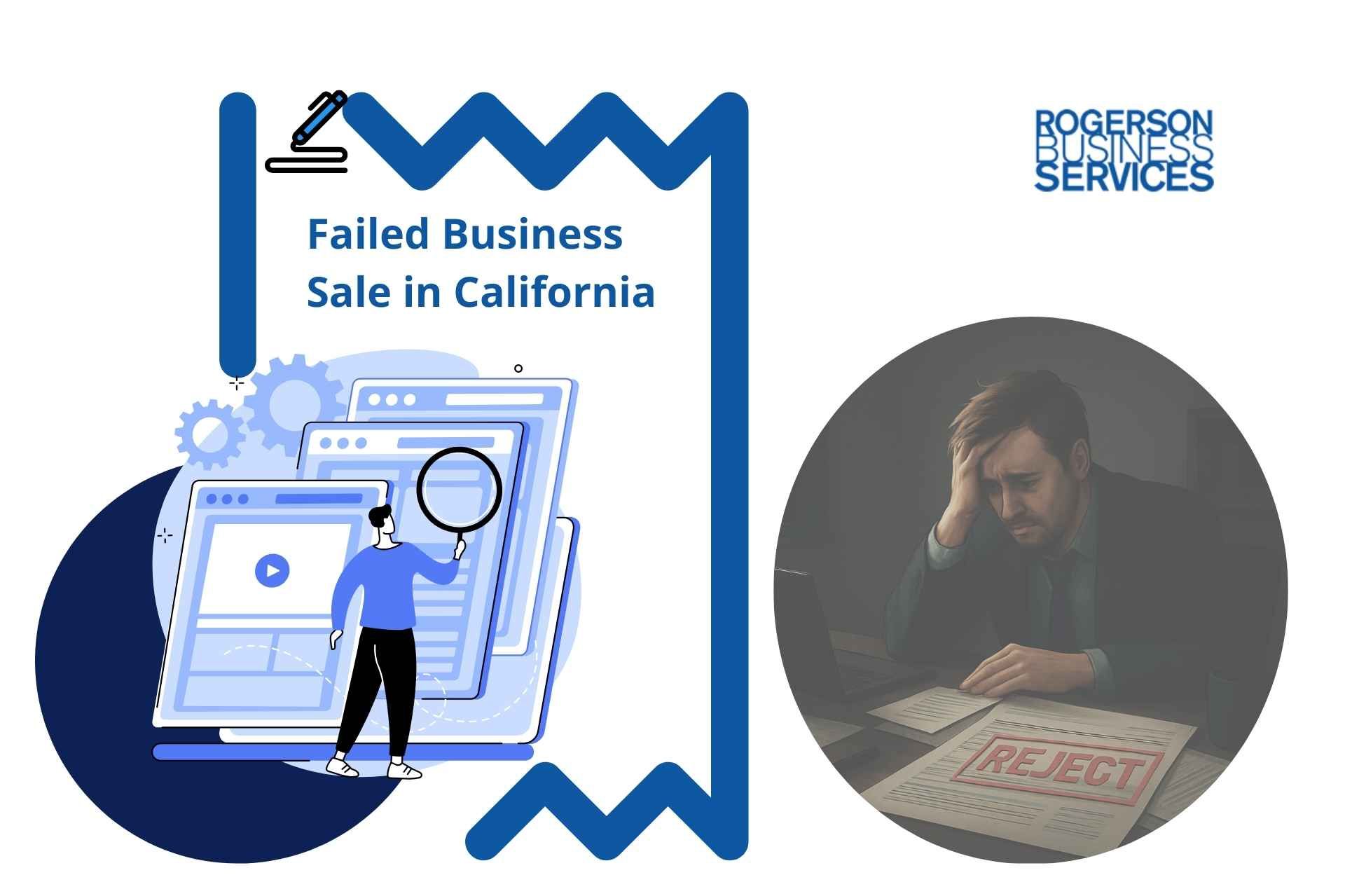The California Exit: A Guide to Sell-Side Deal Structure for Lower Middle Market Businesses
Deal Structure For Selling A California Business With Property
Have you poured your heart and soul into building a thriving California business, and now it's time to reap the rewards? Congratulations! Selling your company with property can be an exciting and financially rewarding experience, but navigating the complexities of a California lower-middle market M&A deal can feel daunting.
One crucial factor for a successful California business exit is a well-structured deal. It's the foundation for maximizing your financial return, minimizing tax burdens, and ensuring a smooth transition. This guide serves as your roadmap to understanding sell-side M&A deal structure in the unique landscape of California's lower-middle market (businesses with revenue of $2 million to $25 million with commercial property).
Here, we'll unveil the secrets to crafting a California deal structure that secures your dream exit. We'll delve into:
- The California Deal Landscape: Understanding the unique regulations, escrow complexities, and tax implications that shape M&A deals in the Golden State.
- The Power of Structure: Why a well-structured deal is your key to maximizing your financial goals and minimizing risks.
- Key Components of a Lower-Middle Market Deal Structure: Exploring the core elements of structuring a successful California business exit in the lower middle market, including seller financing (we'll dedicate a special section to this!).
- Building Your California Exit Team: Assembling a team of M&A advisors, legal counsel, and tax professionals who specialize in California lower-middle market deals.
This comprehensive guide, coupled with the expertise of a qualified M&A advisor, empowers you to navigate the California M&A landscape with confidence and secure a golden exit for your California dream.
So, buckle up and get ready to unlock the secrets of a successful California M&A deal structure!
Please note: This guide is intended for informational purposes only and does not constitute legal or financial advice. It's crucial to consult with qualified professionals to tailor a deal structure that aligns with your specific business and financial goals.
The California Deal Landscape: A Unique Mix of Opportunity and Nuance
California, the land of sunshine and opportunity, also presents a unique playing field for lower-middle market M&A deals. While the fundamentals of deal structure remain consistent, understanding the specific regulations, escrow complexities, and tax implications that shape California transactions is crucial. Here's what sets the California deal landscape apart:
Industry Regulations:
California boasts a robust regulatory environment across various industries. These regulations can influence your deal structure by impacting:
- Environmental considerations: Environmental assessments and potential cleanup costs might be factored into valuation and deal terms.
- Licenses and permits: Ensure all necessary licenses and permits are transferable to the buyer, or include provisions for smooth transfer during escrow.
- Employee regulations: California has stringent employee protection laws that may impact buyer due diligence and post-acquisition integration.
Escrow Complexities:
California escrow can be a labyrinth, often taking longer than anticipated. Here's what to keep in mind:
- Title complexities: Title searches in California can be more intricate due to historical land ownership and potential water rights considerations.
- Third-party approvals: Obtaining permits and approvals from various government agencies can add time to the escrow process.
- Diligence timelines: Factor in additional time for buyer due diligence due to the potential for uncovering unforeseen environmental or regulatory issues.
Tax Implications:
Understanding the potential tax consequences of selling your business in California is paramount:
- Capital gains taxes: California capital gains tax rates can be significant, and structuring your deal can potentially minimize your tax burden.
- Depreciation recapture: Depending on how you've depreciated your business assets, you might face additional taxes.
- Estate planning considerations: If you plan to leave your business to heirs, structuring the deal can influence future inheritance tax implications.
While the California deal landscape might seem like a tangle of regulations and complexities, fear not! These nuances can actually be turned to your advantage with a well-crafted deal structure.
In the next section, we'll unveil the power of a well-structured deal and how it can transform your California exit of mid-sized business from a maze of uncertainty to a smooth path toward achieving your financial goals. Buckle up, because we're about to unlock the secrets to maximizing your return and minimizing your risks!
The Power of a Well-Structured Deal: Your Key to a Golden Exit
Imagine this: You've nurtured your California business for years, and now it's time to harvest the rewards of your hard work. However, a poorly structured deal can leave you feeling shortchanged, facing unexpected tax burdens, or navigating a bumpy transition. This is where the power of a well-structured deal shines.
Think of your deal structure as the blueprint for your California business exit . A well-crafted blueprint ensures a smooth and successful outcome. Here's how a well-structured deal empowers you to achieve your California dream exit:
Maximizing Financial Return:
The right deal structure can optimize your valuation, potentially leading to a higher sale price. It also considers factors like seller financing (which we'll explore further in a dedicated section) to potentially increase your overall return.
Minimizing Tax Burdens:
By strategically structuring your deal, you can potentially minimize capital gains taxes, depreciation recapture, and future inheritance taxes for your heirs. A qualified tax advisor can help you navigate these complexities and identify tax-efficient strategies.
Ensuring a Smooth Transition:
A well-structured deal anticipates potential roadblocks and lays out a clear roadmap for the entire M&A process. This minimizes disruptions to your business operations and facilitates a seamless handover to the buyer.
Achieving Your Personal Goals:
Your exit strategy is personal. Do you want a clean break or some ongoing involvement? A well-structured deal can be tailored to your specific goals, whether it's securing retirement income, funding future ventures, or maintaining a legacy for your employees.
Remember, a well-structured deal is not a one-size-fits-all solution. In the next section, we'll delve into the key components of a lower-middle market deal structure specific to California, including the intriguing option of seller financing.
Key Components of a Lower-Middle Market Deal Structure: Building Your California Exit Blueprint
Now that you understand the power of a well-structured deal, let's explore the key components that form the foundation of a successful California lower-middle market exit.
1. Choosing Your Exit Strategy:
This is the cornerstone of your deal structure. Here are the three main exit strategies to consider:
- Asset Acquisition: The buyer purchases specific assets of your business, such as equipment, inventory, and intellectual property. You may retain ownership of remaining assets like real estate. This option offers flexibility and can be attractive to a wider pool of buyers who might not be interested in the entire business.
- Stock Acquisition: The buyer purchases all or a majority of the outstanding shares of your company. This is a more straightforward approach but can expose the buyer to all your business liabilities.
- Merger: Your business merges with another company, creating a new entity. This option can be complex and requires careful financial and legal planning.
2. Valuation:
Before finalizing the deal structure, it's crucial to determine the fair market value of your business. Several valuation methods are used, and a qualified M&A advisor can help you navigate this process and arrive at an accurate valuation that reflects your California business's unique strengths.
3. Legal Agreements:
Watertight legal agreements are the backbone of any M&A deal. These agreements will outline the specifics of the transaction, including:
- Purchase price and payment terms
- Warranties and representations made by both parties
- Indemnification clauses to protect you from potential liabilities
- Provisions for seller financing (more on this later!)
Having a skilled M&A attorney experienced in California lower-middle market deals is essential to ensure these agreements safeguard your interests.
4. Escrow:
Escrow acts as a secure holding ground for funds and assets until all agreed-upon conditions are met. As mentioned earlier, California escrow can be complex, so partnering with an experienced M&A advisor can help navigate potential delays and ensure a smooth escrow process.
5. Seller Financing (A California Twist):
This intriguing option allows you to finance a portion of the sale for the buyer. While not always applicable, seller financing can be attractive in California's lower-middle market for several reasons:
- Potentially Higher Sale Price: Offering seller financing can make your business more attractive to a wider pool of buyers, potentially leading to a higher overall sale price.
- Spreading Out Your Gains: Seller financing allows you to receive the sale proceeds over time, potentially impacting your tax burden favorably.
Important Considerations for Seller Financing in California:
- Interest Rates: Determining a fair interest rate considers California market trends and the buyer's risk profile.
- Loan Terms: Factors like down payment requirements, loan duration, and potential balloon payments need careful negotiation.
- Security Measures: Including ironclad security measures in the legal agreements protects you in case of buyer default.
Remember, seller financing is a complex strategy and requires careful planning. We'll dedicate a future article to delve deeper into how to structure a seller financing deal in California (coming soon in April 2024).
Building Your Dream Team:
Now that you have a grasp of the key components, it's crucial to assemble your California business exit team. These experts will guide you through every step of the process and ensure your deal structure is optimized for your unique situation. Your team might include:
- M&A Advisor: An advisor with experience in California lower-middle market deals can provide invaluable guidance on deal structure, valuation, and negotiation.
- Legal Counsel: A skilled M&A attorney experienced in California legalities will ensure your legal agreements protect your interests.
- Tax Professionals: A qualified tax advisor can help you navigate potential tax implications and identify tax-efficient strategies for your California exit.
By partnering with this team of experts, you can approach your California M&A deal with confidence, knowing you have the right guidance to secure a golden exit.
In the next section, we'll explore how to assemble your dream team and leverage their expertise to navigate the California M&A landscape.
Building Your California Exit Team: Your Trusted Advisors for a Golden Exit
The California M&A landscape can be complex, but you don't have to navigate it alone. Assembling your dream team of experienced professionals is crucial for ensuring a smooth and successful exit. Here's how to find the right advisors for your California lower-middle market deal:
1. M&A Advisor:
This is your quarterback, leading the entire M&A process. Look for an advisor with a proven track record in California lower-middle market deals. Here's what to consider:
- Industry Expertise: An advisor experienced in your specific industry can understand your business's unique value proposition and challenges.
- M&A Track Record: Ask about their past successes in structuring deals similar to yours in California.
- Negotiation Skills: A skilled negotiator can ensure you achieve the best possible terms for your California exit.
- Network of Contacts: A strong network allows them to identify qualified buyers and navigate the California M&A ecosystem.
2. Legal Counsel:
Watertight legal agreements are essential for protecting your interests. Here's what to look for in an M&A attorney:
- California M&A Expertise: Their experience with California-specific legalities ensures your deal structure complies with all applicable regulations.
- Focus on Lower-Middle Market Deals: An attorney familiar with the nuances of lower-middle market transactions can provide more tailored advice.
- Communication Style: Find an attorney who explains complex legal concepts in clear and understandable language.
3. Tax Professionals:
Tax implications can significantly impact your California exit. Here's what to look for in a tax advisor:
- M&A Tax Experience: Seek a tax advisor with experience navigating tax issues related to M&A transactions in California.
- Understanding of Lower-Middle Market Taxes: They should be familiar with the specific tax considerations for businesses of your size.
- Tax Planning Strategies: A skilled advisor can help you identify tax-efficient strategies to minimize your tax burden.
Finding the Perfect Fit:
- Seek referrals: Ask your network for recommendations from other business owners who've successfully exited in California.
- Interview potential advisors: Meet with them to understand their experience and approach, ensuring they align with your specific needs and goals.
- Ask questions: Don't hesitate to ask about their fees, process, and availability to ensure a comfortable working relationship.
Building a Team You Trust:
By assembling a team of experienced professionals who understand the intricacies of California lower-middle market M&A deals, you gain valuable insights and strategic guidance. These advisors become your partners in achieving a golden exit, ensuring your deal structure is optimized for your financial goals and minimizes potential risks.
Remember: A successful California business exit requires careful planning and a team you can trust. By taking the time to build your dream team, you'll be well-positioned to navigate the M&A landscape with confidence and secure a rewarding outcome.
In the next section, we'll provide actionable steps to get you started on your California exit journey!
Next Steps: Paving the Path to Your California Dream Exit
Now that you're equipped with a solid understanding of deal structure in the context of California's lower-middle market, it's time to take action! Here are some practical steps to propel you towards your dream exit:
1. Assess Your Business and Goals:
- Evaluate your business's financial health, market position, and future growth potential.
- Clearly define your exit goals - maximizing financial return, securing retirement income, or leaving a legacy for employees. If ready, start your assessment.
2. Start Early and Plan Proactively:
A successful California exit doesn't happen overnight. Start planning at least 12-18 months before your desired exit date. This allows time to:
- Improve your business's financial performance to attract better offers.
- Assemble your dream team of advisors.
- Understand potential tax implications and plan accordingly.
3. Leverage Resources:
- Utilize this guide as a roadmap for navigating the California M&A landscape.
- Download our free resource: "California Lower-Middle Market M&A Deal Structure: Essential Considerations" to stay on track.
- Schedule a free consultation with a qualified M&A advisor experienced in California lower-middle market deals. Get started - Click Here.
4. Stay Informed:
The California M&A landscape is constantly evolving. Stay informed by:
- Subscribing to industry publications and newsletters focusing on California M&A trends.
- Attending relevant workshops and seminars on lower-middle market exits.
- Connecting with other business owners who have successfully navigated California M&A.
Remember:
- There's no "one-size-fits-all" approach to deal structure. A qualified M&A advisor can tailor a structure that aligns with your unique business and goals.
- Don't be afraid to ask questions! Understanding the complexities of California M&A empowers you to make informed decisions throughout the process.
By taking these steps and leveraging the knowledge within this guide, you'll be well on your way to achieving a successful and rewarding California exit!
We encourage you to explore our future articles that delve deeper into specific aspects of deal structure, including a dedicated exploration of "How to Structure a Seller Financing Deal" in the California context.
Final Thoughts: Charting Your Course to a Golden California Exit
Selling your California business is a momentous occasion, marking the culmination of your hard work and dedication. However, navigating the intricacies of M&A deals, especially in the unique landscape of California's lower-middle market, can feel overwhelming. But fret no more!
This guide has equipped you with the foundational knowledge to approach your California exit with confidence. By understanding the importance of a well-structured deal, the key components involved, and the value of building a skilled team, you've taken a significant step toward achieving your financial goals.
Ready to transform your California dream exit from a distant aspiration to a tangible reality?
Here are your next steps:
- Download your free resource: Download our comprehensive checklist.
- Schedule a consultation: Connect with a qualified M&A advisor experienced in California lower-middle market deals. During your consultation, you can discuss your specific business, and goals, and receive personalized guidance on crafting a deal structure that maximizes your financial return while minimizing risks. Click Here & Get Started.
Remember, a successful California business exit is an attainable goal. By leveraging the knowledge within this guide, partnering with a qualified M&A advisor, and taking action today, you'll be well on your way to securing your golden exit and unlocking the next exciting chapter in your entrepreneurial journey.
Hey there! Can we send you a gift?
We just wanted to say hi and thanks for stopping by our little corner of the web. :) we'd love to offer you a cup of coffee/tea, but, alas, this is the Internet.
However, we think you'll love our email newsletter about building value and properly position your company before transition/exit your business ownership.
As a special welcome gift for subscribing, you'll also get our helping and educational guides, tips, tutorials, etc.. for free.
It's filled with the best practices for retiring serial business owners like Dan Gilbert, Larry Ellison, Warren Buffett, and many more.
Just sign up for our emails below.



